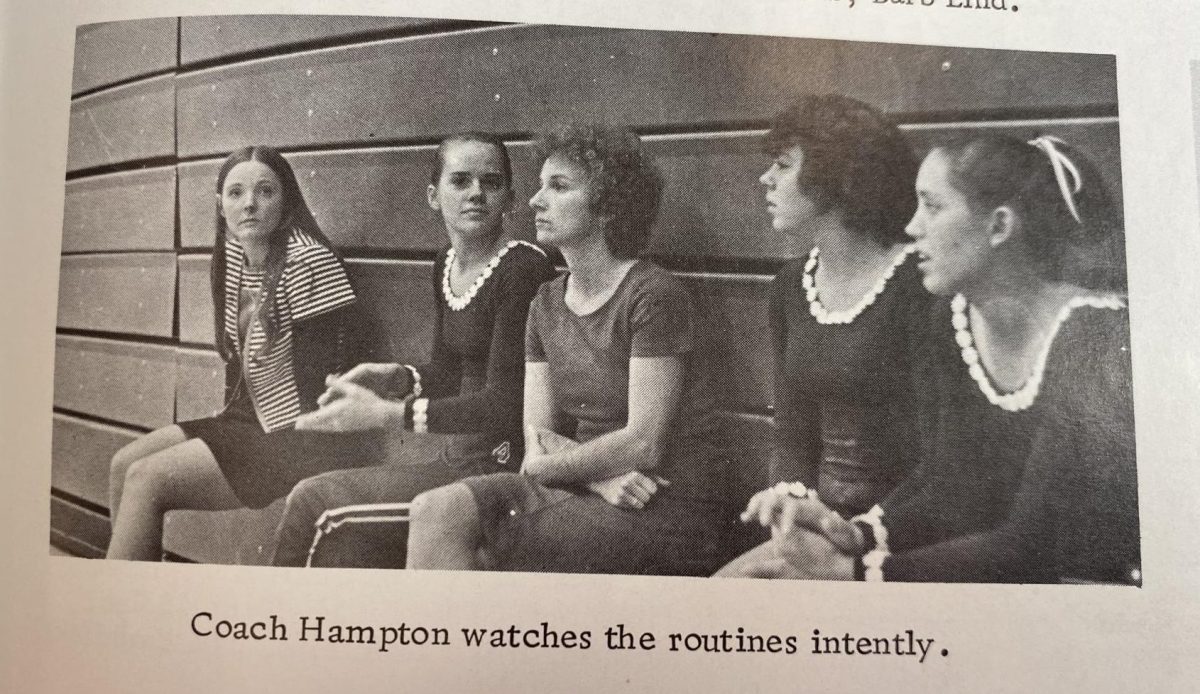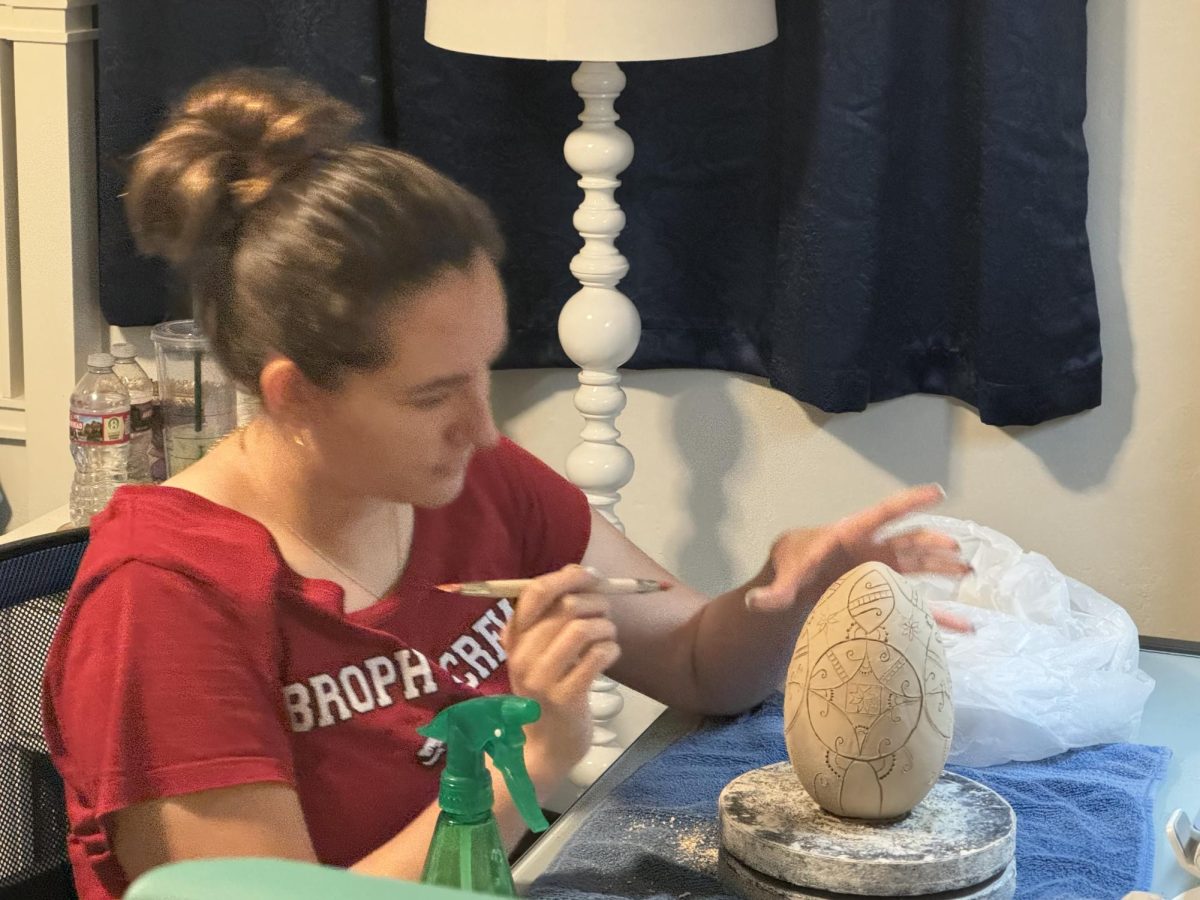Disrupting the cycle: Misuse of new menstrual products
The recent installation of new menstrual product dispensers has both pros and cons for students who need them.
January 13, 2023
Menstrual products are a necessity, but their accessibility, availability and quality have long been an issue. On May 3, 2021, Washington state House Bill 1273 was signed into law. The bill states that, starting in the 2022-23 school year, schools must make menstrual products available to students at no cost, and that the new products are to be funded by each individual district.
Following the signing of House Bill 1273, new menstrual product dispensers were installed in most of Inglemoor’s bathrooms, with the exceptions being the women’s bathrooms in Sherwood Forest and the gym. Those bathrooms have older dispensers that are smaller and have a twistable knob, or require 25 cents for use, if they work at all.
While free, the new products provided in the updated dispensers are often lacking in quality and accessibility. In a recent Nordic News survey, 32 out of 116 students said they have used school provided products; of those 32, 56.3% said the products were uncomfortable.
Sophomore McKenna Wright (she/her) said that, while the products may not be the finest, they get the job done.
“I wouldn’t say they’re the best quality, but they work for an emergency,” said Wright.
Of the bathrooms with new dispensers, there isn’t much clear instruction on how to use them or indication on whether they are filled or not. Wright also mentioned that the dispensers often don’t work, and while the concept of providing free products is good, the execution isn’t the best.
“A lot of times, the buttons don’t work. I feel like that’s a big problem. I think if they made them work better, it’d be great,” said Wright.
These dispensers provide maxi pads and standard-sized tampons. Maxi pads are typically used when someone is experiencing a heavier flow, but are unnecessarily thick for days with a lighter flow. The tampons available are made of cardboard and only come in a standard size, which, again, doesn’t take flow weight into consideration, as bigger tampons are used on heavier flow days and smaller ones when your flow is lighter. Usually, many of the dispensers are empty.
Freshman Ayane Sorajo (they/them) said that the products lacked diversity, and aren’t the most usable, but still believes the dispensers serve a purpose.
“Some people, they just don’t have access at home because they can’t get access to it, and I feel like it’s good for schools to provide it for them,” said Sorajo.
Although the availability of free menstrual products has improved, awareness of the dispensers remains low. 45.7% of 116 survey respondents said that they didn’t know that the school provides free menstrual products for students.
Engineering and chemistry teacher Hailey Klein (she/her) said the school should ensure better awareness of the accessibility of these new installations.
“There’s no signage anywhere other than if you look in the bathroom and you see the actual big white box,” said Klein. “It would be cool to see if there could be some sort of messaging available — just tell students that ‘Hey, it’s available in our bathrooms.’”
Wright also commented on the advertisement of the dispensers, saying that if she needed a menstrual product, she would typically visit the office or ask a friend.
“The first time I ever saw it, I was very surprised, and I [had] never heard anybody talk about it after I found out,” said Wright.
Inglemoor’s school nurse, Carol Ward (she/her), said that even though there are supplies available in the bathrooms, students still regularly visit the health room for menstrual products, which are a different supply than the ones in the bathrooms.
“We have a separate set of supplies that we either buy, or they’re donated from students that come to the health room,” said Ward.
Funding for the free, school-provided products is covered by janitorial services, led by facility manager Sofia Jennings (she/her). She said that each box of products costs about $200, and the funds come out of the facility management budget, which wasn’t raised when House Bill 1273 was passed. Jennings is hesitant to put menstrual products in certain locations because some students misuse and abuse this new privilege. Jennings has found that numerous products have been wasted, finding pads stuck on paper towel dispensers or tampons behind bleachers in the gym.
“The first week there, I saw the mess. It’s kind of like, I try to avoid some places to put it,” said Jennings.
These wasted products represent money that could have been used on other school facility needs, and she is frustrated with those choices.
“I feel sad, because I say [there’s] 1500 students, but maybe from those 1500 students, it’s only 100 that play [with the products], and then other 1400 [would] get punishment because those one hundred do silly things [with the products],” said Jennings.
This story was originally published on Nordic News on December 19, 2022.









![Junior Aneesh Patil displays photos of his family on a vacation in Chicago. His family reunited in the U.S. after being apart from his father for a year. “I didnt want to come to U.S. at the beginning [but my sons] were missing their dad,” his mother Anu said. “That was the reason I had to move here.](https://bestofsno.com/wp-content/uploads/2024/05/Hsiao_20240308_IDMag_AneeshPatil_23-1200x799.jpg)






















![IN THE SPOTLIGHT: Junior Zalie Mann performs “I Love to Cry at Weddings,” an ensemble piece from the fall musical Sweet Charity, to prospective students during the Fine Arts Showcase on Wednesday, Nov. 8. The showcase is a compilation of performances and demonstrations from each fine arts strand offered at McCallum. This show is put on so that prospective students can see if they are interested in joining an academy or major.
Sweet Charity originally ran the weekends of Sept. 28 and Oct. 8, but made a comeback for the Fine Arts Showcase.
“[Being at the front in the spotlight] is my favorite part of the whole dance, so I was super happy to be on stage performing and smiling at the audience,” Mann said.
Mann performed in both the musical theatre performance and dance excerpt “Ethereal,” a contemporary piece choreographed by the new dance director Terrance Carson, in the showcase. With also being a dance ambassador, Mann got to talk about what MAC dance is, her experience and answer any questions the aspiring arts majors and their parents may have.
Caption by Maya Tackett.](https://bestofsno.com/wp-content/uploads/2024/02/53321803427_47cd17fe70_o-1-1200x800.jpg)
![SPREADING THE JOY: Sophomore Chim Becker poses with sophomores Cozbi Sims and Lou Davidson while manning a table at the Hispanic Heritage treat day during lunch of Sept 28. Becker is a part of the students of color alliance, who put together the activity to raise money for their club.
“It [the stand] was really fun because McCallum has a lot of latino kids,” Becker said. “And I think it was nice that I could share the stuff that I usually just have at home with people who have never tried it before.”
Becker recognizes the importance of celebrating Hispanic heritage at Mac.
“I think its important to celebrate,” Becker said. “Because our culture is awesome and super cool, and everybody should be able to learn about other cultures of the world.”
Caption by JoJo Barnard.](https://bestofsno.com/wp-content/uploads/2024/01/53221601352_4127a81c41_o-1200x675.jpg)






![Junior Aneesh Patil displays photos of his family on a vacation in Chicago. His family reunited in the U.S. after being apart from his father for a year. “I didnt want to come to U.S. at the beginning [but my sons] were missing their dad,” his mother Anu said. “That was the reason I had to move here.](https://bestofsno.com/wp-content/uploads/2024/05/Hsiao_20240308_IDMag_AneeshPatil_23-600x399.jpg)





